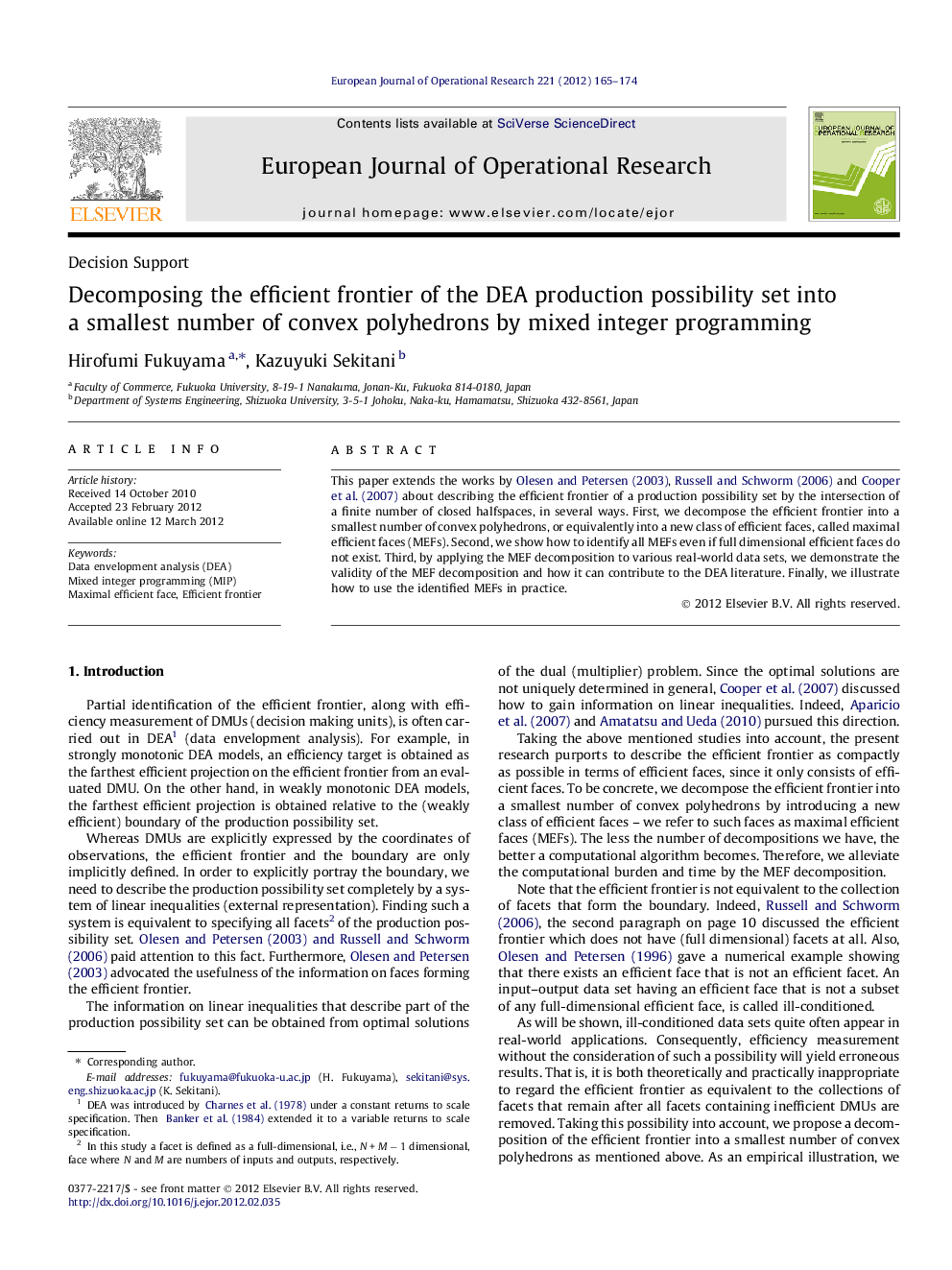| کد مقاله | کد نشریه | سال انتشار | مقاله انگلیسی | نسخه تمام متن |
|---|---|---|---|---|
| 476840 | 1446074 | 2012 | 10 صفحه PDF | دانلود رایگان |

This paper extends the works by Olesen and Petersen (2003), Russell and Schworm (2006) and Cooper et al. (2007) about describing the efficient frontier of a production possibility set by the intersection of a finite number of closed halfspaces, in several ways. First, we decompose the efficient frontier into a smallest number of convex polyhedrons, or equivalently into a new class of efficient faces, called maximal efficient faces (MEFs). Second, we show how to identify all MEFs even if full dimensional efficient faces do not exist. Third, by applying the MEF decomposition to various real-world data sets, we demonstrate the validity of the MEF decomposition and how it can contribute to the DEA literature. Finally, we illustrate how to use the identified MEFs in practice.
► We describe the efficient frontier by the intersection of a finite number of closed halfspaces.
► We decompose the efficient frontier into a new class of efficient faces, called MEFs.
► We show how to identify all MEFs even if full dimensional efficient faces do not exist.
Journal: European Journal of Operational Research - Volume 221, Issue 1, 16 August 2012, Pages 165–174